Page 1 of 2
Experimenting calcium imaging with small refractors
Posted: Tue Sep 18, 2018 9:18 am
by krakatoa1883
Last Sunday and Monday I spent some time in trying to understand which one of my small 80mm refractors performs better in calcium light. Made it just for fun

but hope it may be useful for other imagers too.
Worst of the group was a TS 80ED, a doublet with an element in FPL-51 glass

- ts80.jpg (64.3 KiB) Viewed 10649 times
At full aperture it almost refused to form a sharp image on the screen while capturing a video of a small portion of chromosphere through my Quark

- TS80ED full.jpg (30.69 KiB) Viewed 10649 times
it actually needs to be stopped down to 50 mm in order to get a decent image as this reduces sperochromatism in the near UV and improves seeing too but at the expense of resolution

- TS80ED reduced.jpg (33.64 KiB) Viewed 10649 times
My Skywatcher 80 ED (FPL-53 glass) proved to be better but not dramatically, however it allows to take at least good full disc images without the need to reduce the aperture

- se80.jpg (80.52 KiB) Viewed 10649 times

- sun20180509_FD_CaH.jpg (358.15 KiB) Viewed 10649 times
while the best performer was my TMB 80mm f/11.2, the noted "Planet Hunter" designed by the late Thomas Back with Ohara glasses. It is classified as an "enhanced" achromat but it is actually much better corrected than most cheap ED doublets

- tmb.jpg (78.14 KiB) Viewed 10649 times
Capturing and processing the same region of the above screenshots gave this result which seems fine to my eyes for an 80 mm scope

- 2018-09-17-1023-RB-CaH-AR.jpg (97.05 KiB) Viewed 10649 times
The Planet Hunter is no longer produced but it can still be found in the used equipment market.
While experimenting with my small tubes I checked that the Quark calcium really needs a high focal ratio to perform best, f/9 or f/10 is a good starting point, the higher the better.
The Baader K line filter proved to be useless for calcium imaging, at least with my simple setup and the large BP of the Quark. I noted a slight increase in sharpness if used single stacked than double stacked as provided by the manufacturer.
Re: Experimenting calcium imaging with small refractors
Posted: Tue Sep 18, 2018 11:14 am
by Montana
That is really interesting. I get exactly the same as your first scope with the TEC140, it seems pretty hopeless at 140mm, marginally better at 120mm and OKish at 100mm but nothing like what you get with your last scope.
Edit: The TEC is not rubbish in CaK, it is almost perfect (as Yuri said it would) at 100mm, it was my Lunt CaK that was faulty (5/08/2019)
Alexandra
Re: Experimenting calcium imaging with small refractors
Posted: Tue Sep 18, 2018 1:45 pm
by krakatoa1883
Calcium imaging is indeed a challenging task for every refractor, however stopping down the aperture seems a good cure for both apos and achros.
Navigating into Christian's web site I understand that he uses his TOA 150 at full aperture, if so it should be one of the best corrected instrument existing for calcium imaging....
Re: Experimenting calcium imaging with small refractors
Posted: Tue Sep 18, 2018 2:27 pm
by marktownley
Interesting comparison Raf. I did something similar several years ago with CaK.
I get some reasonable images with my ED80 at higher magnifications I find, once I'm upto about f15-f25.
Frederics website has some great measurements of spherochromatism
https://airylab.com/astronomy-test-reports/
Regards the TEC, when you compare it in the blue to other scopes it is indeed quite a poor performer, nearly 0.5mm difference in focal position from the centre of the fov compared to the edge. Stopping it down to about 70mm should give some stunning results, with the slower light cone also getting some more contrast from the Lunt module.
The TOA150 is an excellent performer, and while the 'curve' seems extreme the scale is smaller by a factor of 10 compared to most other reports on there. I think if I was on a cost no object mission then I would go for the TOA130 as this offers even better spherochromatism than the 150, and certainly on all of Freds graphs the best spherochromatism of any scope on there. It has pretty much zero spherochromatism at all wavelengths.
Re: Experimenting calcium imaging with small refractors
Posted: Tue Sep 18, 2018 7:34 pm
by krakatoa1883
Thanks Mark, the link is very informative. Looking at the TOA a Strehl ratio close to 0.9 in the blue means that the scope can still be diffraction limited in the violet and near UV, really a terrific performer.
I forgot to mention that in my tests I used a barlow or powermate in front of the Quark trying to maintain the working f/ratio about the same and not less than f/20.
Re: Experimenting calcium imaging with small refractors
Posted: Tue Sep 18, 2018 7:49 pm
by christian viladrich
Hello Raf,
Your image with the TMB80 F/11.7 is quite good and is representative of the resolution that can actuallly be reached with a 80 mm in Ca K.
On my side, I had found that the (old) Taka FSQ 106 was good when stopped down to 80 mm.
The new Taka FSQ seems to have an improved blue correction.
The only drawback of the TOA 150 is its the price and ... its aperture. I wish I have a TOA 200 ;-)
Re: Experimenting calcium imaging with small refractors
Posted: Wed Sep 19, 2018 6:40 am
by marktownley
Re: Experimenting calcium imaging with small refractors
Posted: Wed Sep 19, 2018 3:03 pm
by pedro
I got interesting results with the TEC140 (stopped down to 110mm) and a LUNT152 CaK module
I found out that with my CaK modules work better with a focal ratio of F/10 (LUNT CaK modules)
Check out some images below

IMAGING SETUPS (TEC140 F/7, LUNT152 CaK Module)

IMAGING SETUPS

SUN (20180826) CaK. TEC140 F/7, LUNT152 CaK module, X1.6 2" Antares Barlow, PGR GRASSHOPPER 3 GS3-U3-28S4M

SUN (20180825) CaK. TEC140 F/7, LUNT152 CaK module, X1.6 2" Antares Barlow, PGR GRASSHOPPER 3 GS3-U3-28S4M
Re: Experimenting calcium imaging with small refractors
Posted: Wed Sep 19, 2018 5:47 pm
by Bob Yoesle
Thank for posting your results Raf ;-)
Great images Pedro!
The only drawback of the TOA 150 is its the price and ... its aperture. I wish I have a TOA 200 ;-)
Hi Christian, my thought is that this seems to be pointing perhaps to using a reflector telescope such that you already have with an appropriately configured and UV corrected telecentric for CaK imaging ;-)
Re: Experimenting calcium imaging with small refractors
Posted: Wed Sep 19, 2018 7:56 pm
by krakatoa1883
Fine images, Pedro.
christian viladrich wrote: ↑Tue Sep 18, 2018 7:49 pmYour image with the TMB80 F/11.7 is quite good and is representative of the resolution that can actuallly be reached with a 80 mm in Ca K.
On my side, I had found that the (old) Taka FSQ 106 was good when stopped down to 80 mm.
thanks Christian, I had an excellent sample of Sky 90-II with its Q-extender that performed very well in blue and violet, I sold it as at the time was not so much interested in solar imaging.
Re: Experimenting calcium imaging with small refractors
Posted: Thu Sep 20, 2018 1:10 am
by MalVeauX
Heya,
I've been using an ancient achromatic doublet, the old Celestron CR 150 HD (150mm F8) refractor for high resolution stuff (found this thing for $250). I've used it at full aperture and also at F10 (stopped down to about 120~127mm aperture). I generally use it at F10 because it's more appropriate with the various filters in CaK that I was using. I also use a humble old Orion ST80 (400mm F5) refractor ($100 all day), stopped down to F10, for full disc CaK.
I've used my other scopes too, including an Orion ED80 (FPL53), Celestron Omni XLT 120 F8, etc. The results were all comparable I found. The defining difference I found was pretty much the seeing and being close to F10~F12.
I would expect the Celestron Omni XLT 102 F10 (natively F10) is probably an excellent inexpensive frac for everything frankly in narrowband.
++++++++++++++++++++++++++++
++++++++++++++++++++++++++++
Celestron CR150HD 150mm F8 Refractor (operating at F8 & F10) with PST CaK filter & Chroma 393.4 1nm filter.
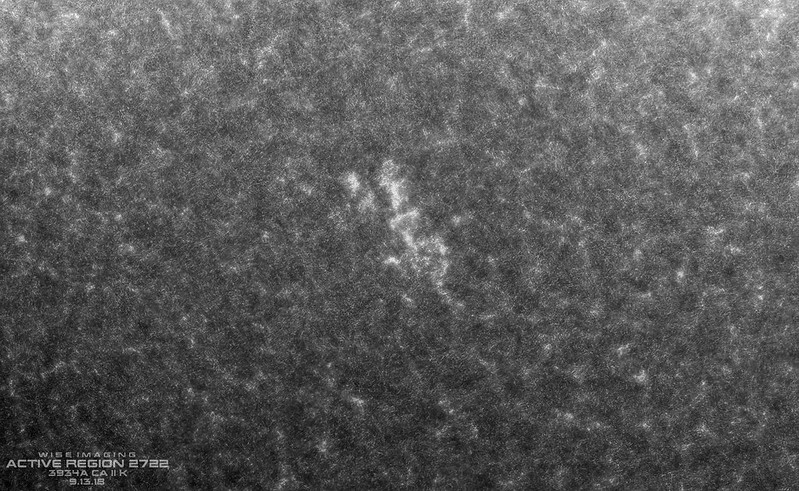
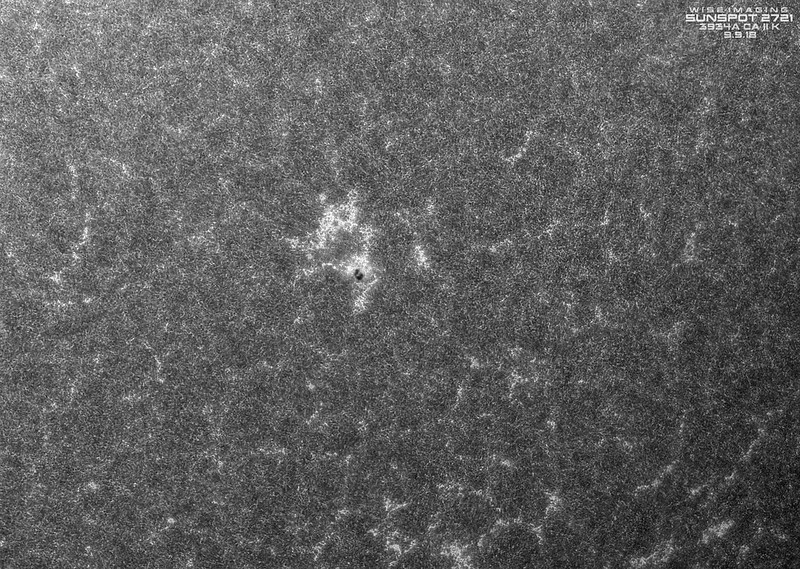
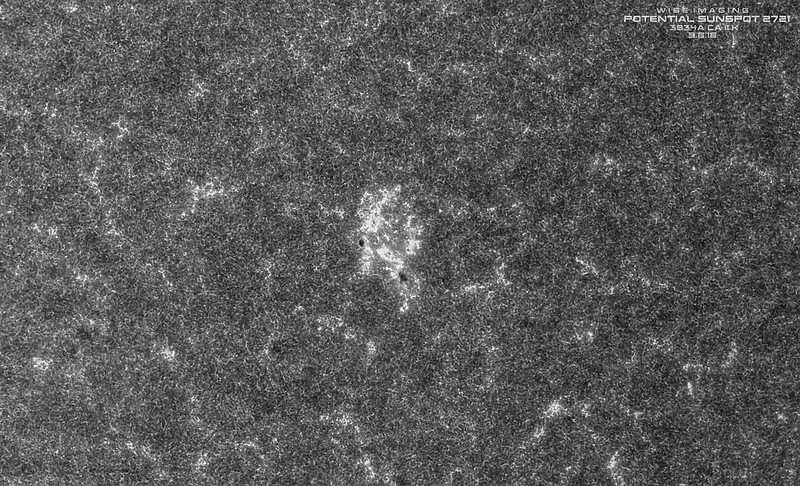
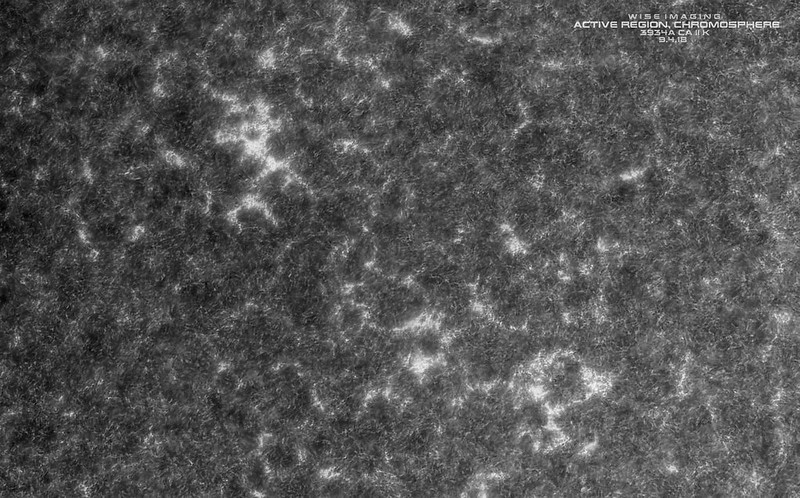


Orion ST80 (stopped down to F10) with PST CaK filter & Chroma 393.4 1nm filter.
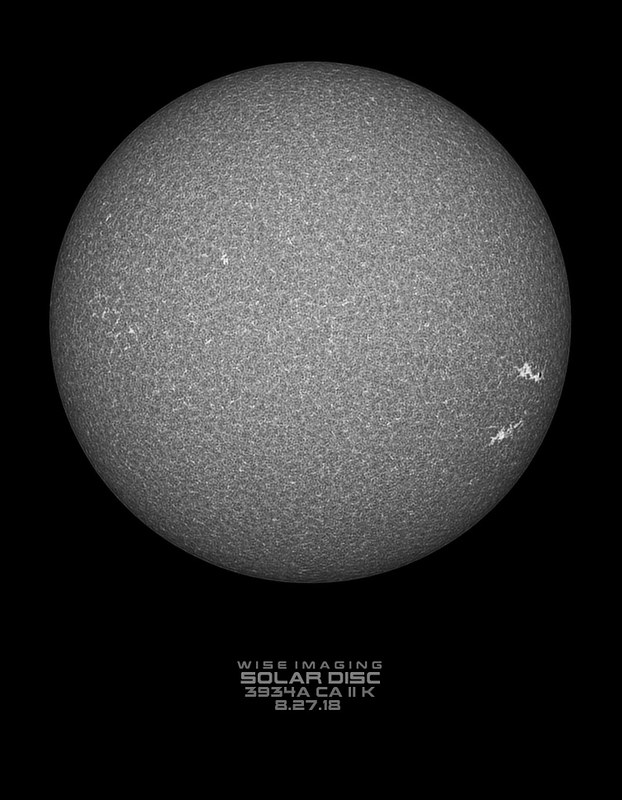
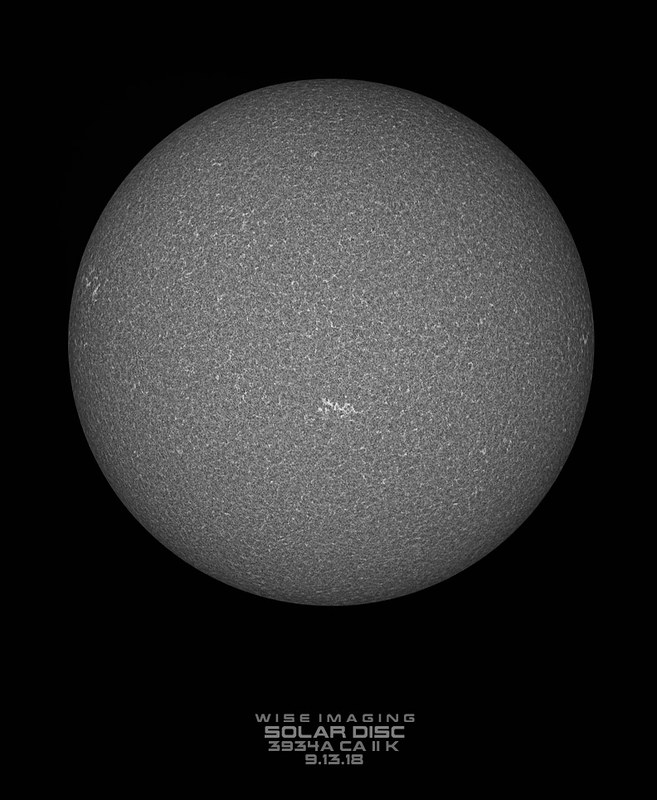
++++++++++++++++++++++++++
++++++++++++++++++++++++++
Here's the two scopes mounted in a side by side setup for rapid scale changing.

- fulldisc_skybender_cak.jpg (66.16 KiB) Viewed 10523 times

- highres_CaK_setup.jpg (128.96 KiB) Viewed 10523 times
Very best,
Re: Experimenting calcium imaging with small refractors
Posted: Thu Sep 20, 2018 7:02 pm
by marktownley
I would hazard a guess that the 115mm/f7 triplet is a reasonable performer in CaK (or Ha or Na) based on this spherochromatism chart

- 115trip2.jpg (24.21 KiB) Viewed 10475 times
http://shop.tecnosky.it/Articolo.asp?Se ... 15&Score=1
The curve is about as close to the TOAs as i've seen in a lot of other scopes.
Re: Experimenting calcium imaging with small refractors
Posted: Thu Sep 20, 2018 8:04 pm
by krakatoa1883
Peter made some
excellent images using a 115mm triplet, may be with optics similar to Tecnosky apo but I am not sure. I had this triplet in its
first version with a different focuser but same objective and I remember it was really good. At the time I was not interested in calcium imaging but I am now seriously considering to purchase one again.
My last experiment in calcium H (I have finished the small refractors for now

), 100mm f/7.5 achromat brought to f/28.5 through the excellent Baader VIP Barlow, the same I am using to image Venus @350 nm with good results:

- 2018-09-20-0835-RB-CaH-AR.jpg (86.46 KiB) Viewed 10468 times
It is an extreme setup because the starting f/ratio is really low for a 100mm achromat, however I noted that Skywatcher doublets tend to be fairly well corrected in the blue while in the red are not so. Moreover reducing the aperture cuts the top end of the color curve where it bends most.
Re: Experimenting calcium imaging with small refractors
Posted: Fri Sep 21, 2018 6:39 am
by marktownley
General rule is with achromats longitudinal aberrations are worse that latitudinal aberrations, and with apochromats latitudinal aberrations are worse than longitudinal aberrations. There will be some exceptions to the rule, the 115/7 being one and the TOA ortho apochromats for example. I found this diagram on telescope optics that I though gave a good comparison of different configurations.
https://www.telescope-optics.net/semiap ... amples.htm

- EDs.PNG (105.35 KiB) Viewed 10440 times
Re: Experimenting calcium imaging with small refractors
Posted: Fri Sep 21, 2018 6:43 am
by marktownley
TheSkyBurner wrote: ↑Fri Sep 21, 2018 2:23 am
You can pop the achromat lens out if its cell and increase the air space gap with cardboard strips to
Decrease blue astigmatism , A bit of trial and error plus tedious guesswork involved but it works.
Use a cheap scope!
I did this with my Meade AR5 and improved perfomance in CaK, it's far from perfect but it offered an improvement on the original shims between the 2 objective elements.
This is why I love solar astronomy - it's all based around math(s) and physics - numbers and engineering then becomes our friend in achieving what we want,
Re: Experimenting calcium imaging with small refractors
Posted: Fri Sep 21, 2018 10:27 am
by krakatoa1883
Very informative table. Looking at the spot diagrams for the g-line (light blue) it seems that only few of the objectives are fairly corrected for this wavelength (calcium H and K lines should give even worse results) but of course some are better than others. Note that semi-apo designs are not much different from achromats in this respect.
I already changed the original cardboard spacers of my 150mm with thicker ones made from an aluminum foil but I didn't make any check of the resulting correction in calcium light compared to the original configuration. Mark, do you remember which thickness have you used ?
Re: Experimenting calcium imaging with small refractors
Posted: Fri Sep 21, 2018 10:34 am
by marktownley
krakatoa1883 wrote: ↑Fri Sep 21, 2018 10:27 am
I already changed the original cardboard spacers of my 150mm with thicker ones made from an aluminum foil but I didn't make any check of the resulting correction in calcium light compared to the original configuration. Mark, do you remember which thickness have you used ?
I used foil that is used for catering cartons - like you get in a take away, no idea how thick they are, they were just thicker than the original ones on the object lens.
Re: Experimenting calcium imaging with small refractors
Posted: Thu Oct 18, 2018 8:09 pm
by krakatoa1883
An exceptionally detailed image posted somewhere in this forum (I have been unable to locate it again, may be from Bob Yoesle) made me curious to image the Sun in Ca-H light with a 100ED f/9 refractor. In the used market I could find one that accidentally was already mine five years ago

and now has returned home. It belongs to the Omni XLT series with optics selected by Synta for the Celestron brand. I don't remember why I sold it but I am very happy to have it back because it proved to be a very good scope at these short wavelengths.

- celestron-omni100ed-xlt1.jpg (22.9 KiB) Viewed 10172 times
Today was sunny but hazy however I tried some preliminary imaging with the above scope. It is really very sharp and don't need to be stopped down because it is evidently well corrected for spherical aberration in the near UV. With just a minimum of UM I got this image

- cah2 100ed.jpg (158.84 KiB) Viewed 10172 times
With a 2.5x Powermate in front of the Quark I obtained the following image after a very slight processing with IRIS, no image overstretch no any abuse of the unsharp masking

- cah3 100ed.jpg (117.47 KiB) Viewed 10172 times
contrast can be further enhanced of course but I preferred to leave the image quite soft.
Hope to have some day with a more transparent sky to make further tests.
Re: Experimenting calcium imaging with small refractors
Posted: Thu Oct 18, 2018 9:21 pm
by marktownley
Yup. that looks to be a winner Raf.
Re: Experimenting calcium imaging with small refractors
Posted: Thu Oct 18, 2018 10:27 pm
by MalVeauX
Looks like it handles it great!
Very best,
Re: Experimenting calcium imaging with small refractors
Posted: Fri Oct 19, 2018 3:18 pm
by eroel
Hi:
For CaK I use at home a 102mm f/9 Meade doublet (achromat), looks like it is fairly corrected for that wavelenghth, though I have tried it with a Safix that got many years ago and it really performs better, even tried it on the Moon and the Safix works incredibly well.
So I think that for HR imaging in CaK, a Safix is the way to go with an achromat to get the best of scopes that are not up to par for that wavelength as the apochromatic objectives.
Best regards,
Eric.
Re: Experimenting calcium imaging with small refractors
Posted: Sat Oct 20, 2018 1:13 am
by Bob Yoesle
"An exceptionally detailed image posted somewhere in this forum (I have been unable to locate it again, may be from Bob Yoesle) made me curious to image the Sun in Ca-H light with a 100ED f/9 refractor. In the used market I could find one that accidentally was already mine five years ago

and now has returned home. It belongs to the Omni XLT series with optics selected by Synta for the Celestron brand. I don't remember why I sold it but I am very happy to have it back because it proved to be a very good scope at these short wavelengths."
The Orion (Synta) 100ED f/9 scope is indeed what I have used. Perhaps it was one of these images(?):
https://www.cloudynights.com/gallery/im ... 1733-comp/
https://www.cloudynights.com/gallery/im ... labled-sm/
https://www.cloudynights.com/gallery/im ... 37-jpg-sm/
https://www.cloudynights.com/gallery/im ... sm-labled/
I'll also be trying my AP 130 EDT f/8 with a Baader TZ3 in the near future to see if I can obtain a bit more CaK resolution when the seeing permits...
Re: Experimenting calcium imaging with small refractors
Posted: Sat Oct 20, 2018 4:12 pm
by krakatoa1883
Bob Yoesle wrote: ↑Sat Oct 20, 2018 1:13 amThe Orion (Synta) 100ED f/9 scope is indeed what I have used. Perhaps it was one of these images(?):
got it, it was
here, anyway thanks for the additional links. Look forward to see your images with the AP 130.
Re: Experimenting calcium imaging with small refractors
Posted: Mon Oct 29, 2018 12:15 pm
by krakatoa1883
wow... really, those images show much contrast as if they were taken through a DS filter. The scope shall be certainly good but it seems that most of the result has to be attributed to the specific K module used.
Re: Experimenting calcium imaging with small refractors
Posted: Mon Oct 29, 2018 2:06 pm
by george9
I am curious to hear how the AP130 EDT works out because it has implications for my AP155 EDF. Bob, you have the f/8 I take it and not the f/8.3. The f/8.3 is the same lens as the AP155 but stopped down to 130. But even the f/8 is somewhat similar.
George
Re: Experimenting calcium imaging with small refractors
Posted: Tue Oct 30, 2018 9:06 am
by marktownley
george9 wrote: ↑Mon Oct 29, 2018 2:06 pm
I am curious to hear how the AP130 EDT works out because it has implications for my AP155 EDF. Bob, you have the f/8 I take it and not the f/8.3. The f/8.3 is the same lens as the AP155 but stopped down to 130. But even the f/8 is somewhat similar.
George
Hi George,
Frederic has done optical reports on both the 130 and the 155 on his website
https://airylab.com/astronomy-test-reports/ Looking at the 130 it shows pretty much perfect spherochromatism in the blue when masked down to about 50% aperture, above about 70 things start to get worse. At full 130mm aperture I think CaK would be quite hazy.
Mark
Re: Experimenting calcium imaging with small refractors
Posted: Tue Oct 30, 2018 10:57 pm
by Bob Yoesle
Hi George,
Not sure my results will be that informative - although I am looking forward to getting things up and running with a new CaK module. My circa 1996 130 EDT f/8 uses an oil-spaced glass combination of ZKN-7 crown sandwiching an FPL-53 center element. The later f/8.35 EDF scopes used FPL-53 and a different crown glass(es - BK-7 & ?). Later lens designs may also have gone to air-spaced. Not sure which would be better for UV @ 393 nm. A little more information here:
https://www.cloudynights.com/topic/6014 ... try8276184
Also see:
https://www.telescope-optics.net/semiap ... amples.htm
Re: Experimenting calcium imaging with small refractors
Posted: Wed Oct 31, 2018 9:59 am
by krakatoa1883
The color of the coating corresponds to the color or combination of colors that is most reflected out. The
CIE chromaticity diagram may help in understanding what colors pass least through a given lens. If one knows the index of refraction of the coating the %T (or the % reflectance) can be
easily calculated for normal incidence as it can be assumed for sun rays. Unfortunately only rarely the characteristics of the coatings are explicitly declared by manufacturers but some assumptions can be made by using of available data, for example for a MgF2 coating, which seems not bad in the violet (Edmund Optics data, but the same can be calculated by using of the above linked page):

- mgf2.jpg (33.2 KiB) Viewed 10471 times
Anyway based on the images one can see on the Internet it seems that actually most telescopes can be successfully used for calcium imaging so lens or plate or mirror coatings don't seem so critical to me. Spherical correction at short WL is much more important, I think, as this leads to huge differences between different refractors and the need to stop down the least corrected ones.
Re: Experimenting calcium imaging with small refractors
Posted: Wed Oct 31, 2018 4:16 pm
by george9
Thanks, all. I know that stopped down to 67% (4 inches), the AP155 looks very nice in my coarse R2 video camera. Thinking of getting a better camera in the spring.
George
Re: Experimenting calcium imaging with small refractors
Posted: Sat Mar 30, 2019 4:20 pm
by Bob Yoesle
Hi everyone,
It seems in general that f-ratio for f-ratio, achromatic refractors have better longitudinal chromatic aberration control, while APO's have better lateral chromatic aberration. However, even my lowly Synta ED100/900 semi-APO doublet does well at CaK, which is one of the most difficult wavelengths for most refractors to image well. The fact that it is f9 as opposed to f6 likely helps (and the CaK filters likely perform much better).
Somewhere I recall reading that you can change the performance of refractors for specific wavelengths by simply re-spacing the elements. A couple of years ago I had planned a larger-aperture solar telescope project using my ED100/900's, and asked Mike Jones (now retired from Lockheed-Martin and proprietor of Precision Optics of Azle LLC) to work up an OSLO simulation of this objective, as it was not only well suited for 656 nm, but gave good results for 393 nm. Mike is a very experienced optical designer and what he came up with is probably the best that can be done without having the actual specs from the OEM:

- ED100 MIJ w CaK image.jpg (301.61 KiB) Viewed 9937 times
Having the OSLO file allowed me to adjust the spacing of the two elements. Increasing the lens spacing from 0.5 mm to 0.95 mm results in reducing 393 nm longitudinal chromatic aberration by half, and would seem to significantly improve CaK performance:

- ED100 393 Nom v Rspcd.jpg (176.03 KiB) Viewed 9937 times
Close up on at-focus spot, Modulation Transfer, and Point Spread Function plots:

- ED100 393 compares.jpg (542.99 KiB) Viewed 9937 times
I have another ED100/900 to play with, so I'm hoping to have some new spacers made and give it a try. Given the already pretty good imaging in CaK, it will be a good side-by-side experiment to see if there are any real-world improvements under good seeing conditions.
PM me if you'd like to have Mike's OSLO file to play around with the objective for other wavelengths. H alpha performance can be slightly improved, but doesn't appear to be worth the effort.
Re: Experimenting calcium imaging with small refractors
Posted: Sun Mar 31, 2019 8:16 am
by marktownley
Great data there Bob, thanks for sharing. I look forward to your spacer experiment when conditions and time allows.
Re: Experimenting calcium imaging with small refractors
Posted: Sun Mar 31, 2019 9:50 am
by bart1805
Hi Bob, very interesting! When increasing the lens spacing is there any negative effect on other wavelengths? And I assume that is more difficult than some layers of aluminium foil to replace the original spacers. Is that correct?
Good luck experimenten! Bart.
Re: Experimenting calcium imaging with small refractors
Posted: Sun Mar 31, 2019 2:38 pm
by marktownley
bart1805 wrote: ↑Sun Mar 31, 2019 9:50 am
And I assume that is more difficult than some layers of aluminium foil to replace the original spacers. Is that correct?
Good luck experimenten! Bart.
No, absolutely not Bart; use a micrometer. If you measure the thickness of potential new donor spacers beforehand you can get the ideal material, just something non compressive. There are a number of different options. I used foil from a 'take away' style container on my AR5 as this was thicker than the stock spacers. If you have 'thin' aluminum foil you can always fold it in half to double the thickness.
Re: Experimenting calcium imaging with small refractors
Posted: Sun Mar 31, 2019 7:20 pm
by krakatoa1883
Thanks Bob, very informative post. My 100ED - I suppose your one to be similar - has a ring spacer that can easily be replaced with three small foils 120° apart as in classical achromats, I made this change on my 120ED which has the same objective, only scaled up. It's a very good scope for calcium however I noted that there is still room for improvements (my TMB 80, for example, is better).
Increasing spacing works for achromats too but improving blue-violet correction has an adverse effect on H alpha.
marktownley wrote: ↑Sun Mar 31, 2019 2:38 pmIf you have 'thin' aluminum foil you can always fold it in half to double the thickness.
I make use of those aluminum discs that are made to stop dropping from wine bottles, those that are sold here have a very uniform thickness of 0.16mm or 0.20mm.
Re: Experimenting calcium imaging with small refractors
Posted: Mon Apr 01, 2019 5:11 pm
by bart1805
Thanks Mark and Raf.
Re: Experimenting calcium imaging with small refractors
Posted: Wed Apr 03, 2019 12:21 am
by Bob Yoesle
When increasing the lens spacing is there any negative effect on other wavelengths?
Increasing spacing works for achromats too but improving blue-violet correction has an adverse effect on H alpha.
Raf is correct, but it might not be as bad as it sounds. I think the acid test is needed in the form of experimental real world evaluations - respacing for much improved CaK performance, while not optimal, might still prove acceptable 546 nm and 656 nm performance. While I'm certainly no expert, consider the following...
Here's the nominal spacing of 0.5 mm and the 656 spots:

- MIJ ED100 656 Nominal.jpg (271.93 KiB) Viewed 9823 times
Here's a respace to 0.4 mm to optimize 656 nm:

- MIJ ED100 656 respace.jpg (239.15 KiB) Viewed 9823 times
Not sure this would provide a perceptible improvement.
If we re-space for 393 nm to 0.95 m, here's the spot diagrams for 656 nm:

- MIJ ED100 656 CaK respace.jpg (309.49 KiB) Viewed 9823 times
Compare this to the respaced/optimized 393 nm spot perfromance:

- MIJ ED100 393 respaced.jpg (290.83 KiB) Viewed 9789 times
And here's 546 nm with a re-space to 0.95 mm:

- MIJ ED100 546 CaK respace.jpg (298.54 KiB) Viewed 9823 times
Below I've plotted 656 nm for the nominal objective, and the respaced objective optimized for 393 nm. I've also increased the aperture divisions from 33 to 50 to increase the intensity of the spot diagrams.
While the spots are certainly not as good, they don't appear terrible. Indeed, the CaK respaced 656 nm plots look much better than the unoptimized nominal CaK, and quite similar to the the respaced/optimized 393 nm spots. Therefore the real world H alpha with the optimized for CaK might work pretty well under most seeing conditions:

- MIJ ED100 656 Nominal v CaK respaced CMP.jpg (548.24 KiB) Viewed 9808 times
Spots with gaussian blur applied:

- Spot compare gz blr.jpg (227.53 KiB) Viewed 9796 times
Re: Experimenting calcium imaging with small refractors
Posted: Wed Apr 03, 2019 4:43 pm
by krakatoa1883
My comment was referred to achromats, based on your plots a 100ED seems a more flexible project. Optimizing the ED for CaK seems certainly worth the effort.
Re: Experimenting calcium imaging with small refractors
Posted: Wed Apr 03, 2019 7:37 pm
by bart1805
Hi Bob, is the nominal value of 0,5mm for the original spacers an estimate or did you measure them? I thought they were about half of that, so 0,025 mm. CS! Bart.
Re: Experimenting calcium imaging with small refractors
Posted: Wed Apr 03, 2019 10:43 pm
by Bob Yoesle
I have not measured it or taken one of the objective out of it's cell. The value is based solely on Mike Jones penciling it out theoretically.
That said, a general rule for Achromats may apply for the curves and spacings being scalable to a percentage of the focal length, and therefore if the actual value is about half of Mike's design, the CaK re-space would be just about twice that.
Re: Experimenting calcium imaging with small refractors
Posted: Wed Apr 10, 2019 10:42 am
by krakatoa1883
Just to point out, again, that not always a low dispersion glass can be beneficial for narrowband imaging. Here are two almost-RAW images taken of a small group appeared last March , all parameters are the same (native focal = 900mm for both scopes, same camera, focus, no. of stacked images, same very slight UM, seeing, Quark calcium tuned to -5). Note that despite the lower aperture (78 mm effective) the image taken with the achromat is slighly sharper than the one provided with my 100ED (which is a very good and selected sample).

- TMB.jpg (20.3 KiB) Viewed 9707 times

- 100ED.jpg (16.93 KiB) Viewed 9707 times
However the ED scope can regain contrast either by slightly reducing the aperture or by simply processing with a stronger UM.
Re: Experimenting calcium imaging with small refractors
Posted: Thu Apr 25, 2019 7:18 am
by bart1805
Opened the lens cell of the Celestron 100mm f/9 ED. There was a shim ring between the lenses. So cut 6 small pieces, glued them together to make three small shims and put everything back. Very tight lens cell so it took quite some time. Distance is now twice as big, now waiting for a moment to test it.
Re: Experimenting calcium imaging with small refractors
Posted: Thu Apr 25, 2019 4:20 pm
by krakatoa1883
Keep us informed, Bart, I am very curious to see the results.
Re: Experimenting calcium imaging with small refractors
Posted: Sun May 05, 2019 10:55 am
by bart1805
krakatoa1883 wrote: ↑Thu Apr 25, 2019 4:20 pm
Keep us informed, Bart, I am very curious to see the results.
First try this morning, it seems an improvement.
viewtopic.php?f=4&t=26041
Re: Experimenting calcium imaging with small refractors
Posted: Sun May 05, 2019 2:43 pm
by Dennis
so a powermate works for enhancing f ratio? why then bothering with expensive refractors when you could use a big newton reflector with an aries front-d-erf and pump the f-ratio with a powermate to f/11 or so?
Re: Experimenting calcium imaging with small refractors
Posted: Sun May 05, 2019 3:02 pm
by bart1805
Dennis wrote: ↑Sun May 05, 2019 2:43 pm
so a powermate works for enhancing f ratio? why then bothering with expensive refractors when you could use a big newton reflector with an aries front-d-erf and pump the f-ratio with a powermate to f/11 or so?
These small refractors are not expensive, compared to the big Erf's and other filters you need.
Re: Experimenting calcium imaging with small refractors
Posted: Sun Sep 22, 2019 12:21 pm
by krakatoa1883
Resuming this thread as I started calcium imaging with a 115mm f/7 Tecnosky triplet refractor. First results seem promising, the scope is better corrected than my previuos ones except the long focus TMB 80.
If I am not wrong Peter Zetner obtained some very good images (better than mine) by using of a similar scope from another brand.
Comments ans suggestions welcomed
Re: Experimenting calcium imaging with small refractors
Posted: Sun Sep 22, 2019 3:54 pm
by marktownley
Great info Raf, keep us updated on the scope, it's one i've very much got my eye on a for a 'new scope'.
Re: Experimenting calcium imaging with small refractors
Posted: Sun Sep 22, 2019 6:40 pm
by krakatoa1883
An apochromat is certainly not necessary, actually my preferred refractor for CaK imaging is a 80 mm f/11.3 TMB achromat. However a 115 mm achromat well corrected @393 nm would be too long, at least for my observing site. This apo is not only well corrected but also much more versatile.
Re: Experimenting calcium imaging with small refractors
Posted: Wed Feb 02, 2022 3:33 am
by sywong2000
Hi
I've been researching to start CaH or CaK imaging. From what I understand a scope with a good quality at UV range is needed.
How would you comment Tak FOA-60Q? I know a much cheaper synta 100mm ED may be better in terms of price-vs-performance.
I haven't seen much discussions using FOA-60Q in CaH/K nor Halpha. So just want to see if anyone may have thought using the scope for solar imaging?
Stephen
Re: Experimenting calcium imaging with small refractors
Posted: Wed Feb 02, 2022 6:27 am
by marktownley
sywong2000 wrote: ↑Wed Feb 02, 2022 3:33 am
Hi
I've been researching to start CaH or CaK imaging. From what I understand a scope with a good quality at UV range is needed.
How would you comment Tak FOA-60Q? I know a much cheaper synta 100mm ED may be better in terms of price-vs-performance.
I haven't seen much discussions using FOA-60Q in CaH/K nor Halpha. So just want to see if anyone may have thought using the scope for solar imaging?
Stephen
Hi Stephen.
Probably not to be honest. Just go for a Sky Watcher ED80 and stop it down to 60mm. The Tak is 2 or 3x the price of the SW.
Mark
 but hope it may be useful for other imagers too.
but hope it may be useful for other imagers too.










